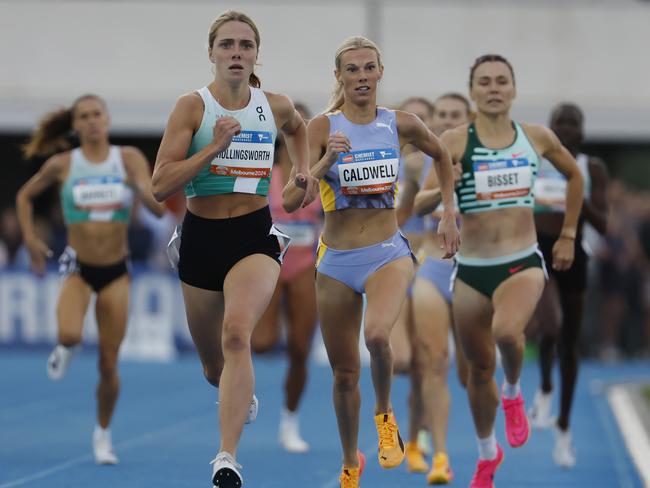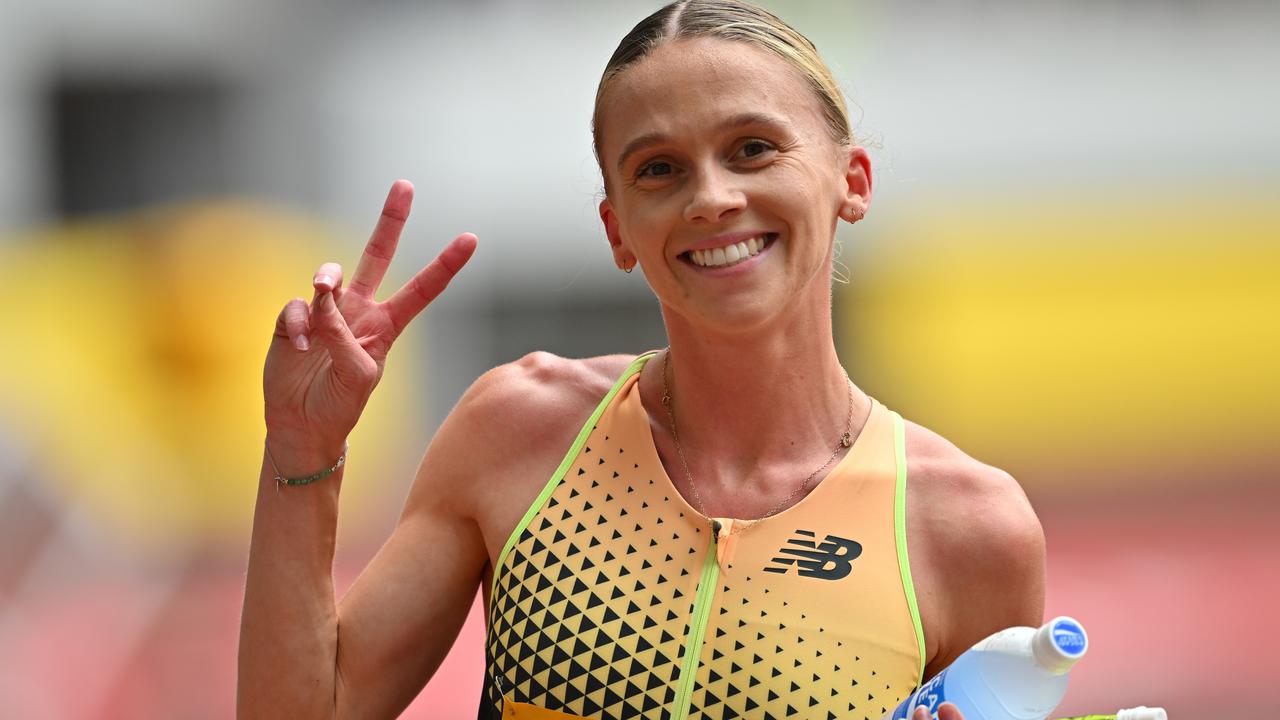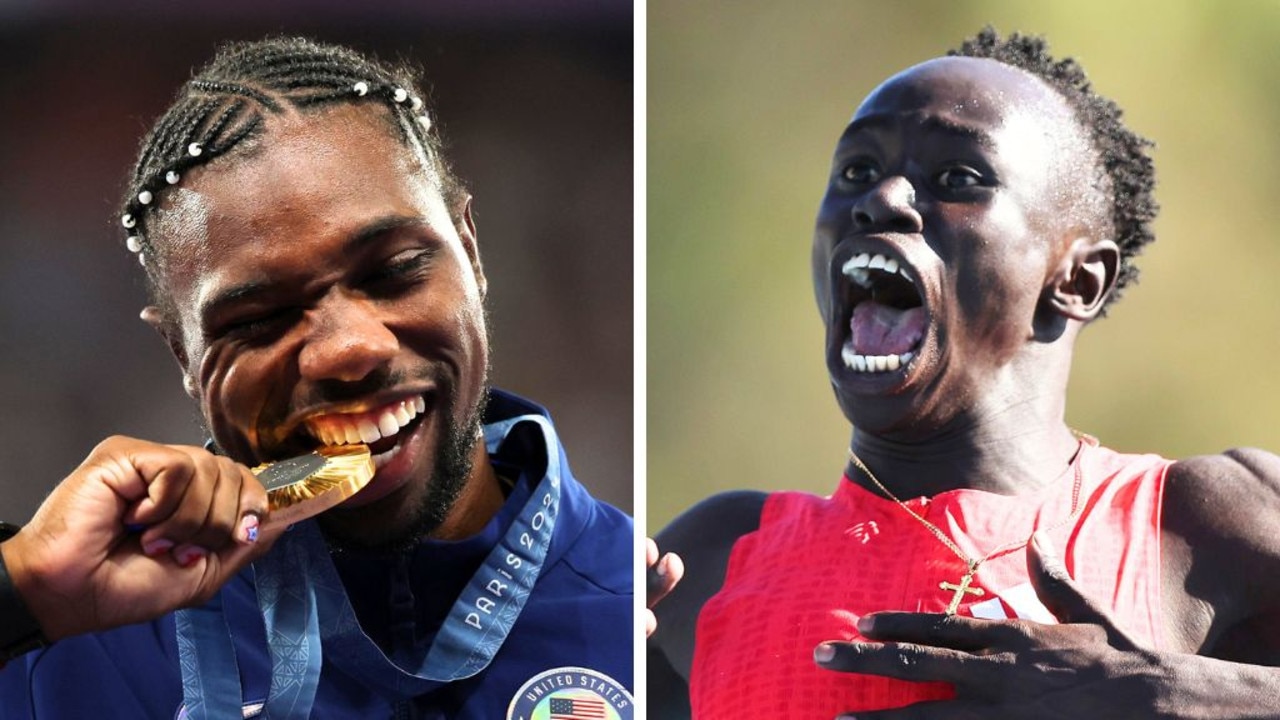Meer the two young Aussies who are leading the charge in the resurgiance of middle distance running
At just 16 Claudia Hollingsworth was already being described as ‘the GOAT’ two years down the track she is still dominating and could be on her way to Paris.

Athletics
Don't miss out on the headlines from Athletics. Followed categories will be added to My News.
Every Friday in Melbourne the wise men of Australian track and field meet for lunch, one of them being Cathy Freeman’s former coach Peter Fortune.
Two years ago at one of the catch-ups, Fortune made a declaration to the assembled group which included former Australian team head coach Chris Wardlaw.
“She’s the GOAT,” Fortune said.
He was referring to a high school runner named Claudia Hollingsworth.
Wardlaw takes up the story. “He said two years ago when he saw Claudia at 16, he called her the GOAT, the Greatest Of All Time.
“He said it was because of her core strength, he saw it then and her ability to hold her form throughout a race which now as an 18-year-old is quite extraordinary.”
Hollingsworth and her male counterpart, fellow teenager Cameron Myers, are at the centre of many coffee discussions among the athletics faithful who have gathered in Adelaide this week for the most anticipated Olympic trials in decades.
Never before has there been so much interest and expectation around a national championships with the depth in the middle-distance events the major talking point.
The 800m and 1500m events in the men’s and women’s are stacked and with only three spots available for each race in Paris, what happens with the weekend’s performances will go a long way to nailing a spot on the Olympic team.
Hollingsworth has elected to try to win her spot through the 800m even though many believe down the track she will be better suited in the 1500m. There are five women who have run under two minutes for the 800m.
There is national record holder Catriona Bissett, Olympic 400m runner Bendere Oboya who has stepped up to the 800m, US college runner Carley Thomas and the most intriguing of the bunch is Abbey Caldwell who, like Hollingsworth, has bypassed the 1500m for the two-lap event on Sunday.
In the men’s 1500m all the talk is about the 17-year-old wunderkid Myers and whether if he takes down the best 1500m field assembled in Australia – which includes Tokyo Olympic finalist Stewart McSweyn and Commonwealth champion Ollie Hoare – then will he be named on Sunday night in the Olympic team.
Or because three others have faster qualifying times than him, will the selectors leave all three spots open and make the selection call in July?
Myers announced himself to the world last year when he became the fastest 16-year-old miler in history – he clocked 3min 55.44sec in Melbourne – breaking the record of Norwegian champion Jakob Ingebrigtsen, the reigning Olympic 1500m gold medallist.
Wardlaw, who was Australian team coach for the Sydney 2000 Olympics, says when Myers’ name comes up over coffee so does the great American’s Jim Ryun.
Ryun was the first high school student to break the four-minute mile and then went on to hold the world record for the mile and 1500m. He also won the silver medal in the 1500m at the 1968 Mexico Olympics.
“He (Myers) is either precocious or a prodigy, there is a difference,” Wardlaw says. “We have had plenty of precocious athletes and we talk about Jim Ryun back in the day, he (Myers) is our Jim Ryun.

“It’s extraordinary what he is doing. His kick in that Sydney race (in February when he beat world champion Jake Wightman) was fantastic. Given what I have seen of him, I’m thinking he is a prodigy.”
In the men’s 800m Peter Bol, who finished fourth at the Tokyo Olympics, is making his comeback after an injury-interrupted season but he won’t have it all his own way with rising star Peyton Craig, Luke Boyes and Jack Lunn all emerging over the summer.
Previously winning the national title and having an Olympic qualifying time was enough to get automatic qualification for the Australian team. That’s not the case this year. It will certainly help, but there are no guarantees with selectors’ discretion set to be a major talking point in Adelaide.
So where has this renaissance of middle-distance running in this country come from?
“The lead-up to Sydney in 2000 was the last time I can remember this sort of tension and this much interest in the athletics community,” Australia’s middle-distance coach Nic Bideau said.
“We have seen national records getting broken every year now, the standard has gone up, people are training better, they are stronger and we are a lot better middle-distance running country than we were 20 years ago.
“With this environment we are much more likely to get a medal in a running event. We haven’t had a medal in a middle or long-distance event at the Olympics since Ralph Doubell in 1968.”

Former middle-distance champion Craig Mottram, a world championships 5000m bronze medallist and coach of Hollingsworth, says the improving infrastructure and professionalism in Australia is a big factor,
“We have quite a few good role models over the last four or five years who have encouraged athletes to come through and people are now training with them which has helped,” Mottram says.
“It is bringing up the next generation of athletes and also that wave of talent coming back from the US college system. What we are providing is an opportunity to come home to Australia and be professional here where historically we haven’t had that set-up.
“But it’s not a simple answer, there are a multitude of things which have come together but for fans of the sport it is beautiful.”
Bol’s manager James Templeton says the advancement in technology with the running shoes is a factor in countries like the US, Britain and Australia.
“The same thing which is happening in Australia has already happened in America and Britain,” Templeton says. “People have been competing and training at a good level for a while and there is no doubt the shoes have enabled some really good training and good recovery to be done.

“We have certainly seemed to benefit from that here and I don’t think you can divorce (the resurgence) from the shoes.”
Wardlaw says there has been a gradual rise in the middle-distance ranks since the 2016 Rio de Janeiro Olympics with significant advances in coaching a factor.
“I would also say you can never underestimate the power of the Olympic dream,” he said. “People can touch it, people are training away and they really want to get to Paris.
“There is a bit in that and dare I say it social media also plays a role. They all know what each other are doing. Back in my day you never knew anything, now they see it on streaming and everyone can see what is possible.”
Wardlaw knows anything is possible over this weekend. “I wouldn’t want to be a selector, it’s going to be chaos,” he says.
Which means there will be plenty to talk about at lunch next Friday.
.
More Coverage
Originally published as Meer the two young Aussies who are leading the charge in the resurgiance of middle distance running





